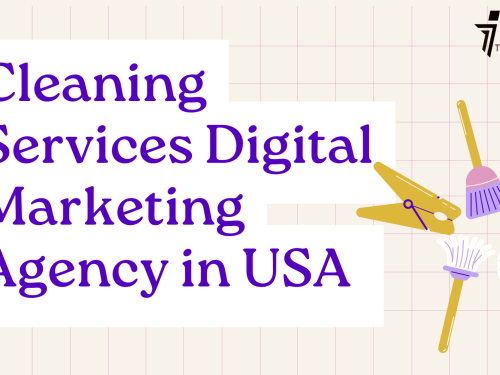Search Engine Optimization (SEO) plays a crucial role in ensuring online visibility, traffic, and growth for businesses. Whether you’re a blogger, a business owner, or a digital marketer, understanding SEO is vital for success.
SEO, or Search Engine Optimization, is the process of improving a website’s visibility on search engines like Google, Bing, and Yahoo. The main goal of SEO is to increase organic (non-paid) traffic to a website by ensuring it appears higher in search engine results pages (SERPs) for relevant keywords.
SEO involves several key elements, including on-page SEO (optimizing content, HTML tags, and site structure), off-page SEO (building backlinks and social signals), and technical SEO (enhancing site speed, mobile-friendliness, and crawlability).
Search engines use complex algorithms to determine which websites offer the most relevant and trustworthy content. SEO helps align your website with these algorithms by improving keyword usage, providing valuable content, and ensuring a positive user experience.
1. Introduction to SEO
SEO (Search Engine Optimization) refers to the process of optimizing your website to rank higher in search engine results pages (SERPs). It involves both on-page and off-page strategies that help search engines like Google understand, index, and recommend your content to users.
2. Importance of SEO in Digital Marketing
SEO is a core pillar of digital marketing. It brings organic traffic to your site without paying for ads. A well-optimized website:
- Increases visibility
- Builds credibility and trust
- Enhances user experience
- Drives more conversions
- Offers long-term ROI
Unlike paid advertising, SEO focuses on sustainable growth.
3. How Search Engines Work
Search engines like Google use web crawlers (bots) to discover content across the web. They crawl, index, and rank web pages based on hundreds of factors including relevance, quality, speed, and usability.
Per the Google SEO Guide, the goal of SEO is to improve how Google finds and displays your content.
4. Key SEO Practices Based on Google Guidelines
Here are some essential SEO practices directly aligned with Google’s official guidance:
a. Website Structure & Navigation
- Create a clear site hierarchy.
- Use breadcrumb menus and internal links to help users and bots navigate.
- Submit a sitemap.xml and use robots.txt effectively.
Google recommends creating a logical link structure where every page is reachable through at least one static text link.
b. Optimized Content Creation
- Write for users first, not search engines.
- Use keywords naturally in titles, headers (H1, H2), and content.
- Focus on original, informative, and engaging content.
c. Meta Tags and Descriptions
- Use relevant title tags and meta descriptions.
- Keep title tags under 60 characters and meta descriptions under 160 characters.
- Avoid duplicating meta information across pages.
d. Mobile-Friendliness
- Use responsive design to ensure usability across devices.
- Google primarily uses the mobile version of the site for indexing.
Use Google’s Mobile-Friendly Test Tool to verify your site’s performance.
e. Image Optimization
- Use descriptive filenames and alt attributes.
- Compress images to improve loading speed.
- Implement lazy loading where appropriate.
f. Link Building & Internal Linking
- Create high-quality backlinks from authoritative sites.
- Use anchor text that’s descriptive and relevant.
- Maintain a healthy internal linking structure to connect related pages.
g. URL Structure & Canonicalization
- Use clean, readable URLs (e.g.,
/seo-tipsnot/page?id=42). - Implement canonical tags to prevent duplicate content issues.
5. Technical SEO Tips
Technical SEO ensures that your website meets the technical requirements of modern search engines. Based on Google’s guide, pay attention to:
- HTTPS encryption: Secure your website.
- Page speed: Optimize CSS, JavaScript, and images.
- Structured data (Schema Markup): Help Google understand your content.
- 404 pages: Create custom error pages with helpful links.
- Core Web Vitals: Improve metrics like LCP (Largest Contentful Paint), FID (First Input Delay), and CLS (Cumulative Layout Shift).
Use tools like Google Search Console and PageSpeed Insights for monitoring and improvements.
6. Common SEO Mistakes to Avoid
Avoid these practices as per Google’s SEO Guide:
- Keyword stuffing
- Cloaking or misleading redirects
- Buying backlinks (violates Google’s guidelines)
- Duplicate content without canonical tags
- Neglecting mobile usability
- Slow-loading pages
Always focus on providing value to users rather than trying to “game” the algorithm.
SEO in digital marketing is a long-term strategy that yields significant benefits when done right. By following Google’s SEO Starter Guide and best practices mentioned above, you can ensure your website is optimized not just for rankings, but also for user satisfaction and credibility.
Investing in ethical, content-driven SEO will continue to be a powerful digital marketing strategy as search engines become even smarter.
Related Posts
What is Google Search Console API Usage Limits: A Complete Guide
If you’re working with the Google Search Console API—whether to analyze website performance, inspect URLs, or manage site data—it’s critical to understand the usage limits Google enforces. These limits...



